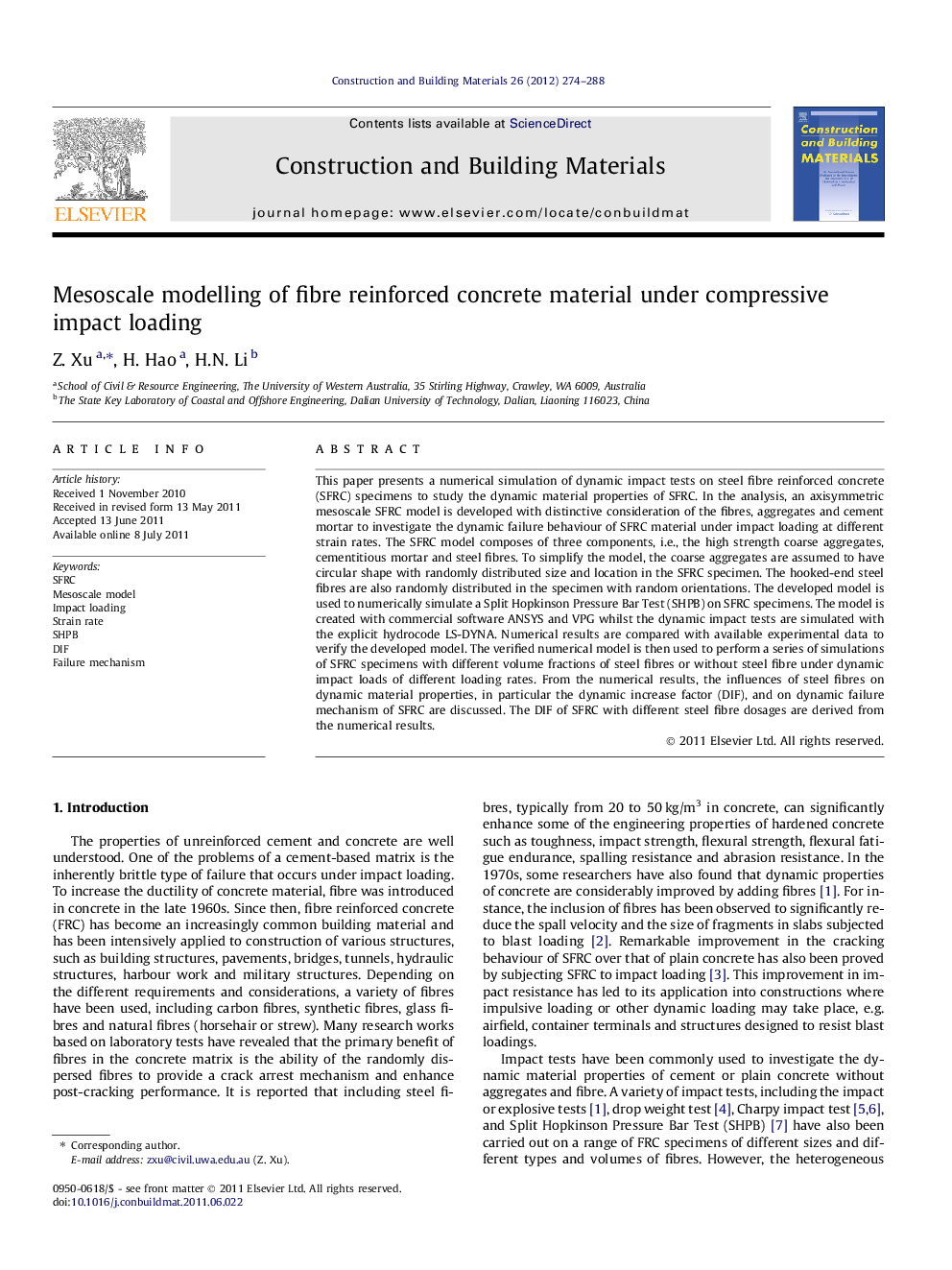| کد مقاله | کد نشریه | سال انتشار | مقاله انگلیسی | نسخه تمام متن |
|---|---|---|---|---|
| 259155 | 503628 | 2012 | 15 صفحه PDF | دانلود رایگان |

This paper presents a numerical simulation of dynamic impact tests on steel fibre reinforced concrete (SFRC) specimens to study the dynamic material properties of SFRC. In the analysis, an axisymmetric mesoscale SFRC model is developed with distinctive consideration of the fibres, aggregates and cement mortar to investigate the dynamic failure behaviour of SFRC material under impact loading at different strain rates. The SFRC model composes of three components, i.e., the high strength coarse aggregates, cementitious mortar and steel fibres. To simplify the model, the coarse aggregates are assumed to have circular shape with randomly distributed size and location in the SFRC specimen. The hooked-end steel fibres are also randomly distributed in the specimen with random orientations. The developed model is used to numerically simulate a Split Hopkinson Pressure Bar Test (SHPB) on SFRC specimens. The model is created with commercial software ANSYS and VPG whilst the dynamic impact tests are simulated with the explicit hydrocode LS-DYNA. Numerical results are compared with available experimental data to verify the developed model. The verified numerical model is then used to perform a series of simulations of SFRC specimens with different volume fractions of steel fibres or without steel fibre under dynamic impact loads of different loading rates. From the numerical results, the influences of steel fibres on dynamic material properties, in particular the dynamic increase factor (DIF), and on dynamic failure mechanism of SFRC are discussed. The DIF of SFRC with different steel fibre dosages are derived from the numerical results.
► A mesoscale model for SFRC is, for the first time, developed in this paper.
► The simulated DIF compares well with the available experimental data.
► The DIFs for plain concrete can be used to approximately model the DIFs of SFRC.
► Simulation also shows ductility of concrete is increased by the addition of fibres.
► The steel fibres in the specimen are more effective in resisting dynamic loads than static loads.
Journal: Construction and Building Materials - Volume 26, Issue 1, January 2012, Pages 274–288